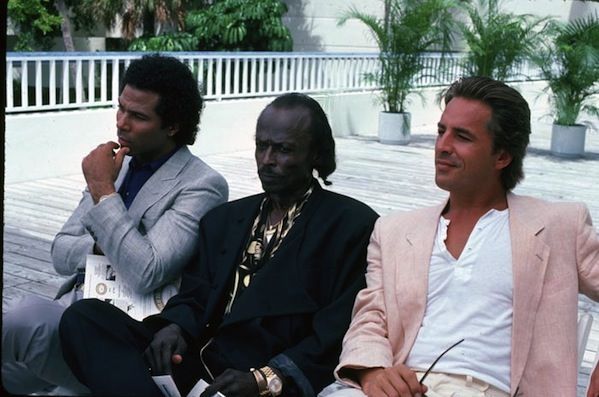If you’ve ever had any doubt, for some reason or other, that rock and roll descended directly from the blues, the video above, a history of the blues in 50 riffs, should convince you. And while you might think a blues history that ends in rock n roll would start with Robert Johnson, this guitarist reaches back to the country blues of Blind Lemon Jefferson’s “Black Snake Moan” from 1928 then moves through legendarily tuneful players like Skip James and Reverend Gary Davis before we get to the infamous Mr. Johnson.
Big Bill Broonzy is, as he should be, represented. Other country blues greats like soft-spoken farmer Mississippi John Hurt and hardened felon Lead Belly, “King of the 12 String Guitar,” are not. Say what you will about that. The recordings these artists made with Okeh Records and Alan Lomax, despite their commercial failure in the 30s, midwifed the blues revival of the fifties and sixties. Hear Lead Belly’s version of folk ballad “Gallows Pole” above, a song Led Zeppelin made famous. Lead Belly’s acoustic blues inspired everyone from John Fogerty to Skiffle King Lonnie Donegan, Pete Seeger to Jimmy Page, as did the rootsy country blues of Lightnin’ Hopkins, who is included in the 50 riffs. As are John Lee Hooker, Muddy Waters, Howlin’ Wolf, and BB King’s electric styles—all of them picked up by blues rock revivalists, including, of course, Jimi Hendrix.
Hendrix’s “Red House” riff makes the cut here, as we move slowly into rock and roll. But before we get to Hendrix, we must first check in with two other Kings, Freddie and Albert—especially Albert. Hendrix “was star struck,” says Rolling Stone, “when his hero [Albert King] opened for him at the Fillmore in 1967.” For his part, King said, “I taught [Hendrix] a lesson about the blues. I could have easily played his songs, but he couldn’t play mine.” See King play “Born Under a Bad Sign” in 1981, above, and hear why Hendrix worshipped him.
Mississippi blues moved to Memphis, Chicago, New York and to Texas, where by the 70s and 80s, ZZ Top and Stevie Ray Vaughan added their own southwest roadhouse swagger. (No Johnny Winter, alas.) Many people will be pleased to see Irish rocker Rory Gallagher in the mix, and amused that The Blues Brothers get a mention. Many more usual suspects appear, and a few unusual picks. I’m very glad to hear a brief R.L. Burnside riff. The White Stripes, Tedeschi Trucks Band, and Joe Bonamassa round things out into the 2010’s. Everyone will miss their favorite blues player. (As usual, the powerhouse gospel blues guitarist Sister Rosetta Tharpe gets overlooked.) I would love to see included in any history of blues such obscure but brilliant guitarists as Evan Johns (above), whose rockabilly blues guitar freakouts sound like nothing else. Or John Dee Holeman, below, whose effortless, understated rhythm playing goes unmatched in my book.
Like so many of the bluesmen who came before them, these gentlemen seem to represent a dying breed. And yet the blues lives on and evolves in artists like Gary Clark Jr., The Black Keys, and Alabama Shakes. And of course there’s the prodigy Bonamassa, whom you absolutely have to see below at age 12, jamming with experimental country speed demon Danny Gatton’s band (he gets going around 1:05).
If you’re missing your favorites, give them a shout out below. Who do you think has to be included in any history of the blues—told in riffs or otherwise—and why?
Related Content:
The Thrill is Gone: See B.B. King Play in Two Electric Live Performances
R. Crumb’s Heroes of Blues, Jazz & Country Features 114 Illustrations of the Artist’s Favorite Musicians
Watch Rock Pioneer Sister Rosetta Tharpe Wow Audiences With Her Gospel Guitar
Zeppelin Took My Blues Away: An Illustrated History of Zeppelin’s “Copyright Indiscretions”
Josh Jones is a writer and musician based in Durham, NC. Follow him at @jdmagness




